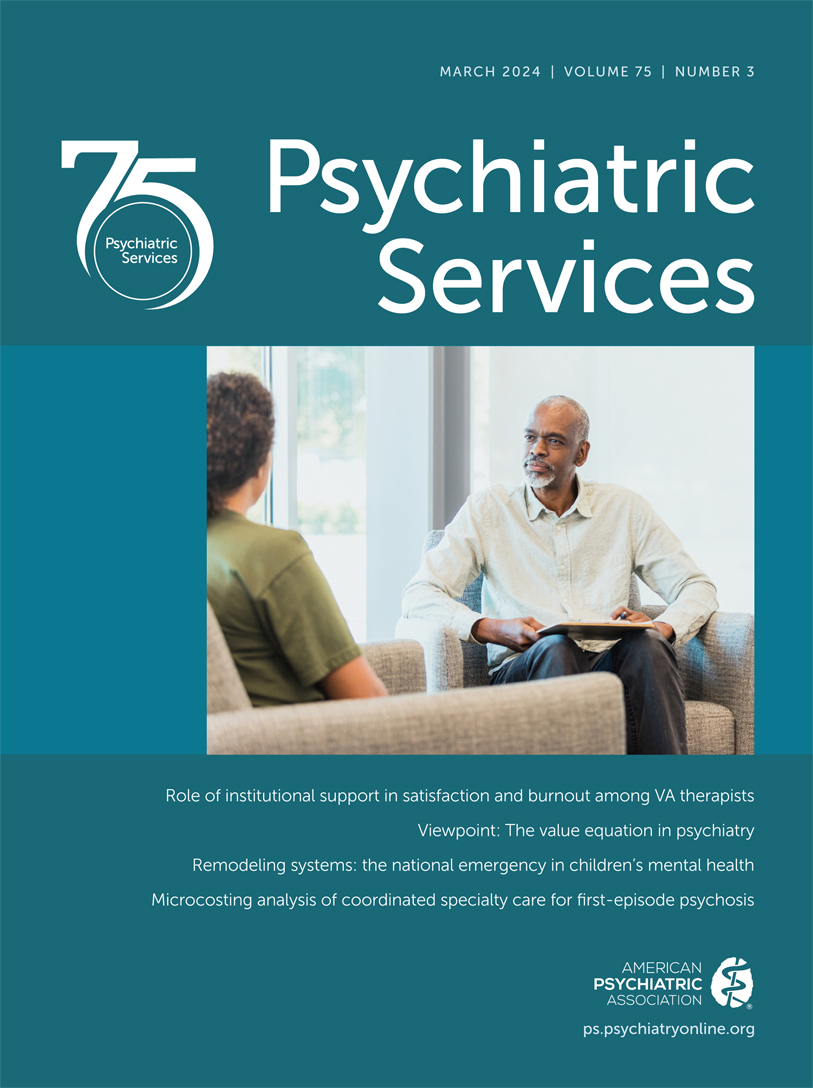Substance Use Disorders, Mental Illness, and Health Care Utilization Among Adults With Recent Criminal Legal Involvement
Abstract
Objective:
Individuals involved with the criminal legal system have higher rates of mental illness, addiction, and health care utilization. The authors examined whether substance use disorders and mental illness alone or in combination drive health care utilization among those with recent criminal legal involvement.
Methods:
This cross-sectional analysis used nationally representative data from U.S. adults with past-year criminal legal involvement (N=9,039) recorded in the National Survey on Drug Use and Health (2015–2019). Using adjusted negative binomial regression models, the authors estimated relative risks for health care utilization. Primary independent variable categories included neither substance use disorder nor mental illness, substance use disorder only, mental illness only, and both conditions. Health care utilization included emergency department (ED) visits and nights spent in inpatient care.
Results:
Relative to neither mental illness nor substance use disorder, mental illness alone was associated with significantly increased acute health care services use: for ED visits, incidence risk ratio (IRR)=1.43 (95% CI=1.18–1.75) and for inpatient stays, IRR=2.14 (95% CI=1.47–3.11). Having both conditions was associated with increased ED visits (IRR=1.62, 95% CI=1.38–1.91) and inpatient stays (IRR=4.16, 95% CI=2.98–5.82). Substance use disorder alone was associated only with higher risk for ED visits compared with neither condition (IRR=1.23, 95% CI=1.01–1.50).
Conclusions:
Mental illness with or without co-occurring substance use disorder is a strong driver of acute health care utilization after interaction with the criminal legal system. Interventions tailored to the unique needs of individuals with mental illness or substance use disorder are needed for those with recent criminal legal involvement.
Access content
To read the fulltext, please use one of the options below to sign in or purchase access.- Personal login
- Institutional Login
- Sign in via OpenAthens
- Register for access
-
Please login/register if you wish to pair your device and check access availability.
Not a subscriber?
PsychiatryOnline subscription options offer access to the DSM-5 library, books, journals, CME, and patient resources. This all-in-one virtual library provides psychiatrists and mental health professionals with key resources for diagnosis, treatment, research, and professional development.
Need more help? PsychiatryOnline Customer Service may be reached by emailing [email protected] or by calling 800-368-5777 (in the U.S.) or 703-907-7322 (outside the U.S.).



